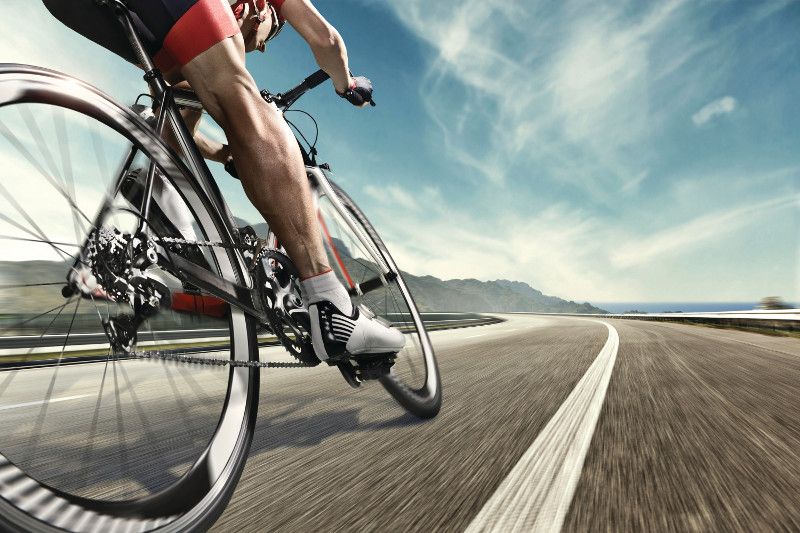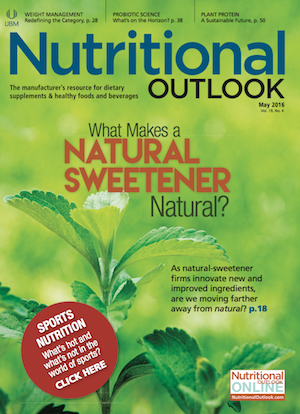Staying Ahead of the Game: Sports Nutrition Market Trends for Dietary Supplements, Food, and Drinks
A look at today’s sports nutrition trends
Photo © iStockphoto.com/Aksonov

Within the complex world of sports nutrition, there is rapidly increasing change, not just in who consumes sports products but in how they do it and what retains their buy-in.
So, where is this market heading?
Sporty Foods Welcomed by All
Sports supplements and related health products are not just for trained athletes. Inevitably, a growing number of everyday people consume these items on the daily as part of their pursuit of a healthy lifestyle. But even as sports nutrition manufacturers win over these non-niche consumers, the category’s more-traditional clientele-bodybuilders, elite athletes, and so on-shouldn’t be forgotten.
The converging point for both types of consumers appears to be, according to several market analysts and manufacturers, a trend towards more “real food” products in the sports nutrition category. As Innova Market Insights says in its “Top 10 Trends for 2016” report, “Rather than consumers opting for these [traditional] sports nutrition products, manufacturers are reaching out to them with better-tasting sports products that are presented in a friendlier way so that sports nutrition can be truly suitable for all.”
One example of this tendency is the multinational brand Myprotein, which now sells jerkies, nut pastes, oats, and cookies alongside traditional supplement products, with all of these products positioned on their protein content. A more unique example is the European food brand Backaldrin, which last year launched a whole-grain sports bread-yes, sports bread-called Actipan. Reportedly developed in accordance with recommendations from the German Olympic Sports Confederation, the whole-grain loaf, made with particular selections of grains and sprouted legumes, delivers carbohydrates, vitamins, and trace minerals that, when complemented by spreads or other foods, “provides everything that active, body-conscious people need on a daily basis.”
The ongoing marketing shift towards sporty food involves a lot of repositioning of regular foods; however, it’s also a stage for suppliers of highly standardized ingredients, many backed by sports performance research, to get in the game. Bioenergy Life Science Inc. (Ham Lake, MN), for instance, a supplier of D-ribose that supports the body’s production of ATP, recently announced Novel Foods status for its ingredient, opening up its business to functional foods and beverages in the United Kingdom.
Food Bars
Evidence of a move to sporty foods is easily found in the food bars category. According to a report from the market research group Mintel, U.S. sales of all bars (snack, nutrition, and protein) grew 30% between 2009 and 2014, to $6.2 billion. In an already saturated market, Mintel says the promotion of functional claims on bars, in combination with whole-food ingredients, will meet consumer demand and help stave off competition.
An advantage of food bars over other products is that these items can and tend to be consumed without much restraint. A recent Mintel online survey suggests that food bars, and even “performance bars” in particular, are frequently consumed as meal replacements, as snacks in between meals, and in multiples during a single eating session.
Food bars are also convenient when it comes to protein fortification. Alongside food bars, items like cereals, breads, and other grain products remain strong suitors for protein claims, real-food ingredients, and other sports-related values.
The Rise of Ready-to-Drink
As with bars, beverages continue their own market ascent, but with an increasingly “natural” bent. Virginia Lee, a beverage analyst at market research firm Euromonitor, says that natural formulations and reformulations are penetrating the sports ready-to-drink (RTD) beverage category, not only in the form of coconut water-which she says is “frequently marketed as ‘nature’s sports drink’”-but with a notable uptick in natural colorants and sweeteners, too.
The trend towards “natural” is especially relevant in the sale of energy drinks, but it’s also evident in a recent trend of workout powder mixes turning into RTDs. Chris Schmidt, another Euromonitor analyst, says he doesn’t expect core users to seek out these newer configurations of their favorite products, but that these iterations could help snare consumers “who haven’t quite graduated to buying tubs of powder concentrate.”
Despite the exceptions, sports drinks in general continue to be popular. Another recent Mintel online survey found that nearly half of respondents even drink them when they aren’t working out. (See figure below.)
STORY CONTINUES ON PAGE 2
The Female Athlete
While male consumers may have relatively stable needs as sports nutrition consumers, reports indicate a big shift in female exercise patterns towards muscle strength and fitness rather than maintaining a slim figure. This revolution, according to Bill Levi, vice president of strategy and business development at Nutrition 21 LLC (Purchase, NY), is creating a growing market for “dedicated female health products within the sports nutrition space.”
Aside from products geared to women, co-gender marketing for many sports nutrition products is now all the more important, at least for certain products.
Senior Athletes
Another demographic change in effect globally is an increase in elderly consumers who want to incorporate sports nutrition in their diet.
According to Euromonitor, while many brands still don’t directly target older athletes, this could change-in Europe, anyway. The EU’s European Food Safety Authority recently permitted a health claim for creatine and muscle strength for adults over 55 years of age.
Regardless of where they live, senior consumers will likely opt for “active nutrition” brands like Ensure High Protein rather than intensive “sports nutrition” brands.
World Markets
Thanks to the growing global population, the sports nutrition market has a rapidly increasing consumer base. Predictably, a lot of it’s in the United States. According to Innova Market Insights, the United States accounts for 63% of global sports nutrition consumption, with an overall retail value of $5.9 billion. Australia and the United Kingdom follow in second and third place, at estimates of $479 million and $471 million, respectively. All three countries are forecasted for more growth throughout the next several years.
While so much of the world’s sports nutrition consumption is in the United States, this doesn’t mean the U.S. market can’t be penetrated by outsiders. In fact, Euromonitor says it’s seeing more foreign companies launch in the United States-a reverse, says Chris Schmidt, of “the age-old trend of brands getting big in the United States and then conquering the world.” At the same time, some smaller countries are seeing rapid sports nutrition growth locally, such as in Thailand where sales of sports drinks reportedly grew last year alongside an increasing number of sports enthusiasts.
Also read:
Leading Brands Describe the New Sports Nutrition Customer
Sports Supplement Ingredient Trends
Six Trends Driving the Sports Drinks Market
Protein Isn’t the Only Game in Town for Sports Nutrition
Sidebar: Growing Demand for Sports Certification
Within the sports nutrition category, a subset of extreme athletes or “core users” may respond positively to “natural” call-outs and real-food ingredients, but it’s even more important that they have access to clean products-as in products that are free from substances banned by sporting organizations.
“We’re finding that people are looking for more clean labels and ingredients to help them simplify the product-selection process,” says Andrew Halpner, PhD, vice president of product development for the Klean Athlete brand of sports supplements. For this reason, the company’s products are certified by the NSF Certified for Sport program.
NSF International (Ann Arbor, MI) implemented NSF Certified for Sport to give sports nutrition consumers the trust that certain dietary supplement products have been tested to verify what’s on the label and to verify an absence of banned substances. The program is used by sports organizations such as the National Football League, the National Hockey League, and Major League Baseball. What’s more, the program continues to expand.
Cheryl Luther, DC, general manager of dietary supplements and beverage quality at NSF, says that NSF-certified products doubled in 2014. Now, the Certified for Sport program specifically is expanding into ready-to-drink beverages and functional foods. Medical devices, like skin patches and inhalers, for which interest is limited but growing, may also be targets for future certification, but they would require their own separate protocol for product testing, the firm adds.


.png&w=3840&q=75)

.png&w=3840&q=75)



.png&w=3840&q=75)



.png&w=3840&q=75)






















